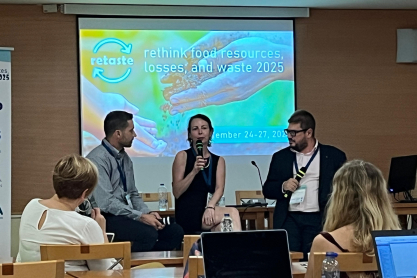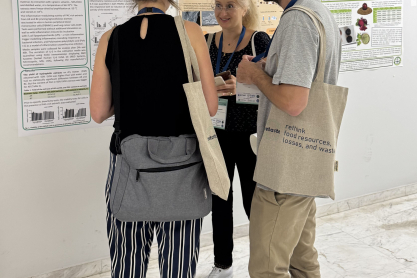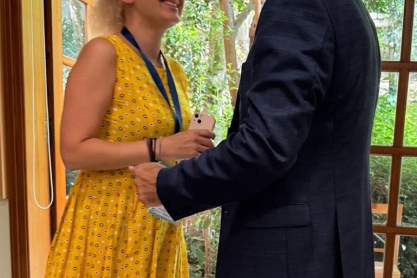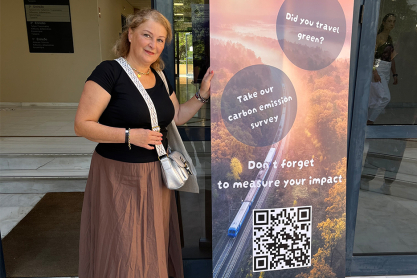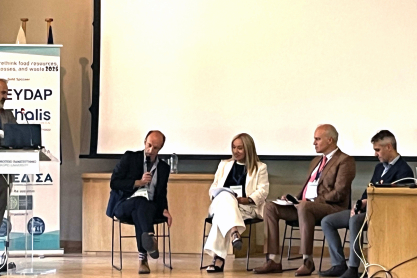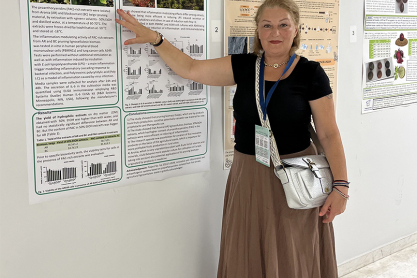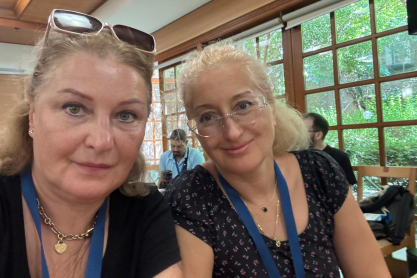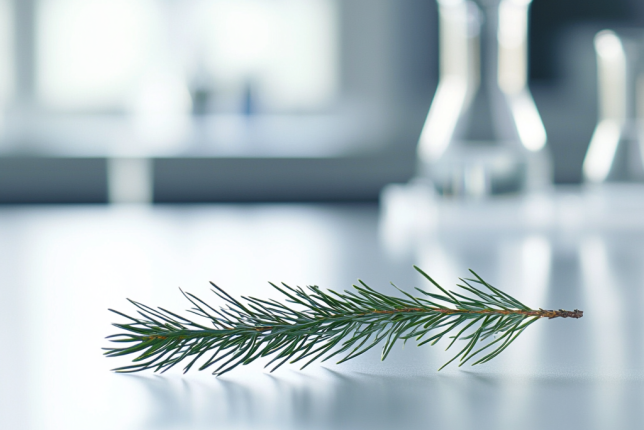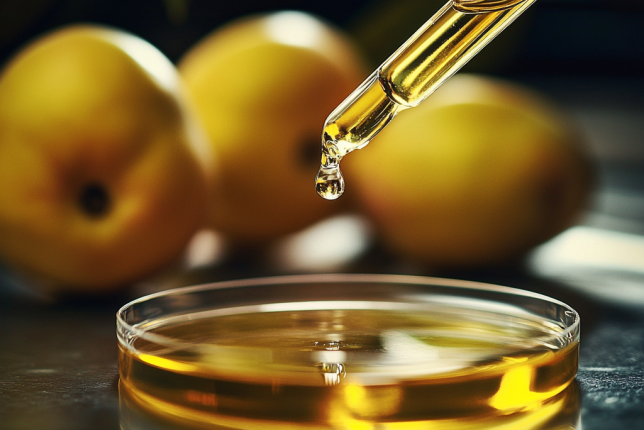LSIWC researchers present study on the utilization of fruit shrub pruning biomass at the international RETASTE conference

In September 2025, the 5th International Conference “RETASTE: Rethink Food Resources, Losses, and Waste” took place in Athens, Greece, bringing together experts from across Europe to discuss innovative solutions for the reuse of food resources, losses, and waste within the framework of the circular bioeconomy.
The Latvian State Institute of Wood Chemistry (LSIWC) was represented by researchers Anna Andersone and Natālija Zaharova, who presented the study “Inflammation-Modulating Activity of Aronia (Aronia melanocarpa) and Blackcurrant (Ribes nigrum) Pruning Lignocellulosic Biomass’ Extracts”, carried out within the framework of the Fundamental and Applied Research Project (FLPP) No. lzp-2022/1-0599.
The study demonstrated that proanthocyanidin-rich extracts obtained from aronia and blackcurrant pruning biomass exhibit inflammation-modulating properties, suggesting their potential use in the development of new anti-inflammatory and antipathogenic formulations. This research contributes to both the circular bioeconomy and health sciences, showing how agricultural residues can be transformed into high-value bioproducts with potential applications in medicine and pharmaceuticals.
About the project
The FLPP project No. lzp-2022/1-0599 “Innovative anti-inflammatory and antipathogenic systems based on proanthocyanidins isolated from fruit shrubs agricultural lignocellulosic waste” aims to generate new knowledge about the composition, structure, properties, and correlations of proanthocyanidins (PACs) obtained from the agricultural residues of sea buckthorn, chokeberry, and blackcurrant fruit shrubs growing in Latvia. Based on the established correlations, the project seeks to develop a technological solution for producing antibacterial, antiviral, and anti-inflammatory agents.
The lignocellulosic waste of fruit shrubs, formed during branch pruning, is a valuable source of secondary metabolites – proanthocyanidins (PACs). Plant PACs are characterized by diverse chemical and biological activity, making them promising for applications in healthcare.
By combining chromatographic and spectroscopic analyses suitable for the characterization of complex individual compounds and their mixtures, the project develops both fundamental and applied knowledge on the diversity of PACs in the biomass of local fruit shrubs. With the aim of reducing and rationalizing antibiotic use – one of the European Union’s key priorities – the research focuses on identifying relationships between PAC concentration, composition, and biological activity, as well as their synergy with antibiotics.
The obtained results will provide a scientific and practical foundation for the use of PACs as a natural alternative to synthetic agents, helping to limit the development of microbial resistance that poses major health and economic challenges. The functional composition of PACs ensures mucoadhesive properties, enabling the development of innovative, locally acting anti-inflammatory and antipathogenic systems based on natural compounds and sustainable resource use.
